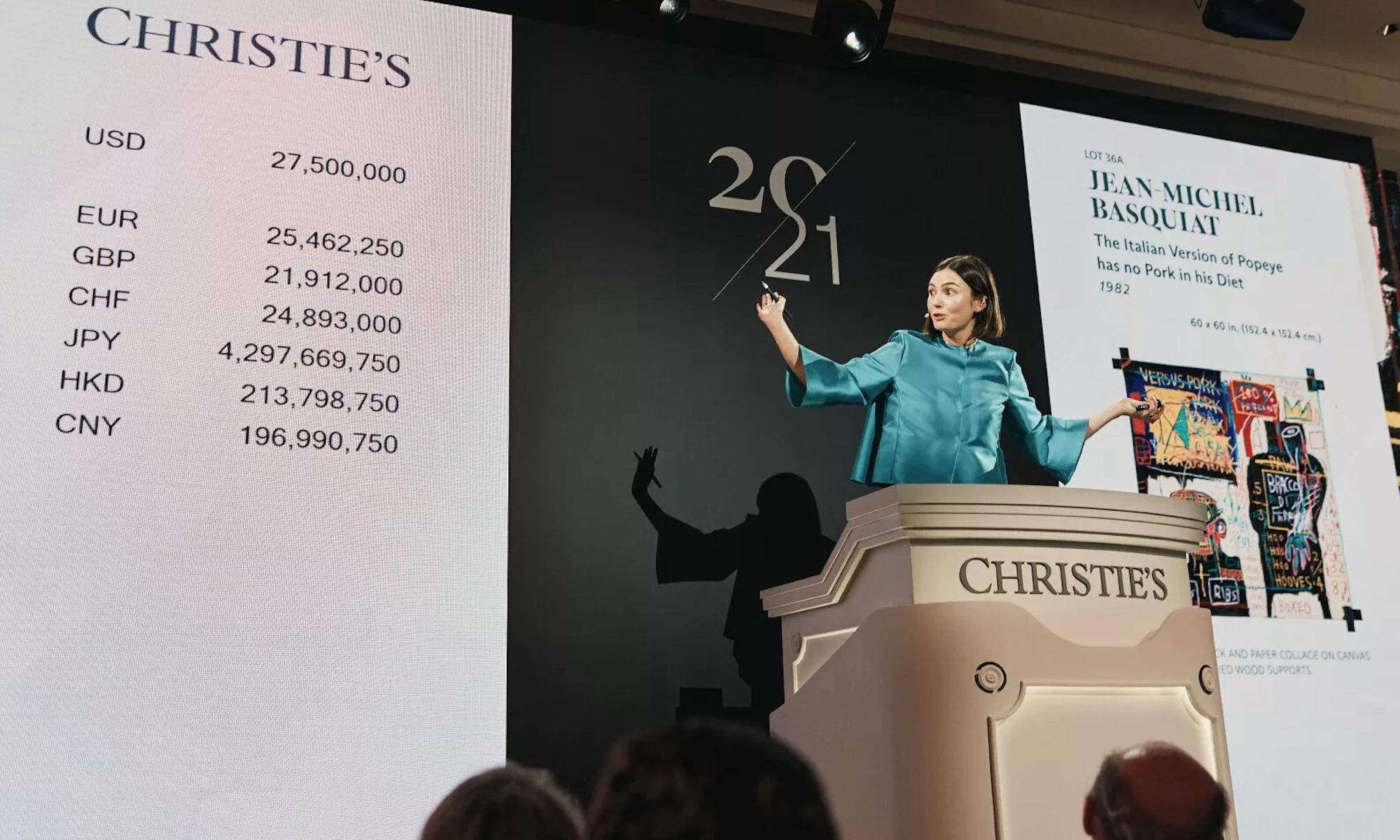Georgina Hilton leads Christie's 21st-century evening sale on 14 May 2024 in New York
Courtesy Christie's Images Ltd
The latest proof that the art market is down but not out arrived today (16 July), as Christie’s announced select results from the first half of 2024. The auction house’s total revenue from live and online auction sales during this period reached $2.1bn worldwide, around $600m less (-22%) than it made under the hammer during the opening six months of 2023. The drop is even steeper when compared to the same period in 2022, when competition for the collections of Anne Bass, Thomas and Doris Ammann and Hubert de Givenchy propelled Christie’s to a hearty $4.1bn in revenue from auction sales—nearly double its equivalent results this year.
Yet several other metrics showed that Christie’s has held surprisingly steady in the face of recent turbulence. Its healthy 87% sell-through rate was on par with that in both 2023 and 2022. The index of hammer price to low estimate was 111% through this June, meaning that the winning bids for all lots sold (before fees) outperformed their minimum expectations by around 11%. The equivalent figure for 2023’s first half was 107%, meaning a year-on-year improvement of 4%. (Christie’s did not publicise the index of hammer price to low estimate in 2022; as a privately held company, it has the right to choose which operational results it divulges.)
“Despite a decline in our total auction sales, resilience is the key word to characterise Christie's results for the first half of the year,” says Guillaume Cerutti, the auction house's chief executive. “In a challenging macroeconomic environment, we have maintained or improved on all the other key metrics by which we measure our performance.”
Although inflation continued easing in the year’s first half, the global economy remains under duress from high interest rates, ongoing wars in Ukraine and the Middle East and anxiety among the collecting class about the political outcomes from a historic year of elections. Echoes of these challenges were perhaps most evident in Christie’s sales of top-end works of art.
The priciest lot sold by the auction house through June of this year was René Magritte’s 1958 canvas L’ami intime (the intimate friend), which fetched £33.7m (with fees) in London. For comparison, the top lot during the first half of 2023 was Henri Rousseau’s Les flamants (1910), which sold for a premium-inclusive $43.5m, while Andy Warhol’s 1964 silkscreen painting Shot Sage Blue Marilyn took first prize in the equivalent period of 2022 by bringing in $195m (with fees), the most ever paid for a 20th-century work at auction.
Sale revenue from single-owner collections has also been noticeably down in 2024. The most valuable collection sold by Christie’s through this June was that of the Barbier-Mueller family, whose holdings of African and Oceanic art made €73m (with fees) overall in Paris this March—a fraction of the $210m worth of art sold from the Gerald Fineberg collection in May 2023, let alone the $363m sale of the Bass collection the spring before.
By sale category, nearly two-thirds of Christie’s $2.1bn in first half auction revenue came from 20th- and 21st-century works of art, with such lots bringing in just over $1.3bn. Luxury goods were the second most lucrative category under the hammer, contributing $362m (around 17% of the global total by value). Works of art from Asia and the rest of the world rounded out the top three by making $217m (around 10% by value).
Data on private sales was absent from the auction house’s first half results. "Private sales remain at a high level and continue to make an important contribution to the business," a Christie's spokesperson said when asked about the omission. After achieving $850m from January through June 2021, revenue from private transactions significantly declined in the equivalent period of the succeeding two years, decreasing to $600m in 2022, then to $484m last year.
Christie’s first half performance did, however, reinforce its logic for investing in a new 50,000 sq. ft Asia Pacific headquarters, set to open in the Zaha Hadid Architects-designed Henderson building in September. Hong Kong remained the auction house’s top market in the region during the first half of 2024, followed by mainland China. Buyers in the Asia Pacific zone also supplied more than one-quarter of the global auction revenue among buyers who were new to Christie’s during this span, as well as 38% of spending among its millennial clients worldwide.
Clients from Europe, the Middle East and Asia made up another growth demographic, albeit a modest one. The share of auction sales among this group in the first half of the year rose to 38%, up from 35% during the same period in 2023. The global share of bids placed online also increased 3% year-on-year, from 79% in the first half of 2023 to 82% this year to date—a particularly noteworthy result given the cyberattack suffered by the auction house just ahead of its marquee sales in New York this May. This data point underlines an important truth about weathering difficult cycles in the art market: sellers can only be resilient if buyers are willing to meet them halfway.

